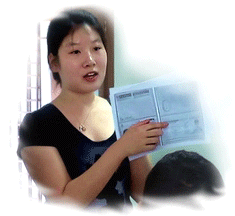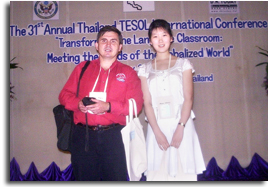| |
|
|
||
输入关键词,搜索本站更多内容 |
||

| 作者:广西大学行健文理学院/李晨辛 来源:本站征稿 本站编辑发布 | ||
| (←承前页) |
 Advantages after students get used from the approach(学生适应教学法后的优点):
Advantages after students get used from the approach(学生适应教学法后的优点):
The process-product approach required us to think and revise our writings. This is a crucial component in the writing process in both L1 (see, for example, Faigley et al., 1985; Onore, 1989) and L2 by ourselves and peers, so we turned traditionally passive listening to active creating. We actively participated in the process and learned from peer-editing which helps learners to identify and raise awareness of their strengths and weaknesses in writing. (Tsui, 2000). In Lixin Xiao’s (2005) research, it’s reported that students are aware of that they need a long-term goal to pursue and be more active in their learning process. Hence, the writing portfolios (Qinghua, 2010) gave us a goal for the whole semester, helped us feel the process was less tedious and taught us how to do it properly. At the end, the essays in the portfolio would show us how much progress we made. That would also help students to build their confidence of the course, so they’d be more motivated.
Research Method (研究方法)
Purpose of this Study: Measurement of progress/stagnation(研究目的:评估学生写作的进步和停滞)
This paper takes a close look at individuals’ progress under a non-traditional teaching method in a certain time period – the freshman year, 2008-2009.
Results demonstrated an improvement in the learners writing skills after practicing their writing skills within the process-product approach framework with the Extra Requirements and discursive limits (Smerdov, 2011, in printing).
Data Collection (数据来源)
I’ve collected 95 drafts of student A, B and C’ s essays on social topics (See Appendix 1), 200 words each. Quantitatively I codified them as issues of grammar, spelling, word/phrase choice, unnecessary, sentence structure and punctuation. Qualitatively I analyzed them including changes of ideas on the stage between outline and drafts 1,2,3. I analyzed the authors’ logic, the way they handle cultural details, paragraph structure and key words. The statistics show that the most common problems are grammar errors, word choice also sentence structure.
Progress made (进步方面·略)
Stagnation (停滞方面·略)
Two different questionnaires of the research(两份问卷调查·略)
Questionnaires analysis (问卷分析·略)
Advantages of process-product approach (“分步学习-总结指导教学法”的优势)
• Letting students learn from each others, increasing their communication;
• Using brainstorm and then writing their personal ideas, avoiding to write what they recited or copied;
• Figuring out problems by themselves enhancing the memories of knowledge during the classes;
• Memorizing the extra requirements given by teacher through practicing
Shortcomings of the approach(“分步学习-总结指导教学法”的短处)
• The quality of peer-editing depends on classmates’ English level, so some students occasionally complain that they can’t get useful corrections from peers;
• It’s hard for students to find out all mistakes or improper expressions. What’s more, they might alter the right to wrong.
Conclusion(结论)
 The process-product approach ensures that students improve their writing on different levels. After several weeks’ training, students adapted to the approach and took the advantages of it. We became more sensitive to logic and ways of expressing our ideas. We always had a second thought about the sentence after we wrote it. Students sometimes would not consider all the peers’ corrections, because in some situations they believed their original expressions were better. What’s more, for individuals, the motivated students learned more than those who were not, so the individuals’ progresses were not equal. Over all, When you look at the contrast between the traditional approach and the process-product approach, the later one enjoys much more merit than the traditional method in the long term.
The process-product approach ensures that students improve their writing on different levels. After several weeks’ training, students adapted to the approach and took the advantages of it. We became more sensitive to logic and ways of expressing our ideas. We always had a second thought about the sentence after we wrote it. Students sometimes would not consider all the peers’ corrections, because in some situations they believed their original expressions were better. What’s more, for individuals, the motivated students learned more than those who were not, so the individuals’ progresses were not equal. Over all, When you look at the contrast between the traditional approach and the process-product approach, the later one enjoys much more merit than the traditional method in the long term.
References (参考文献·略)■
| (本站2011年8月21日编辑发布) | |||
| 上一篇: | 原青岛市教科所所长/姜宏德教授:对双语教育学科定位问题的认识 | ||
| 下一篇: | (暂 无) | ||
|